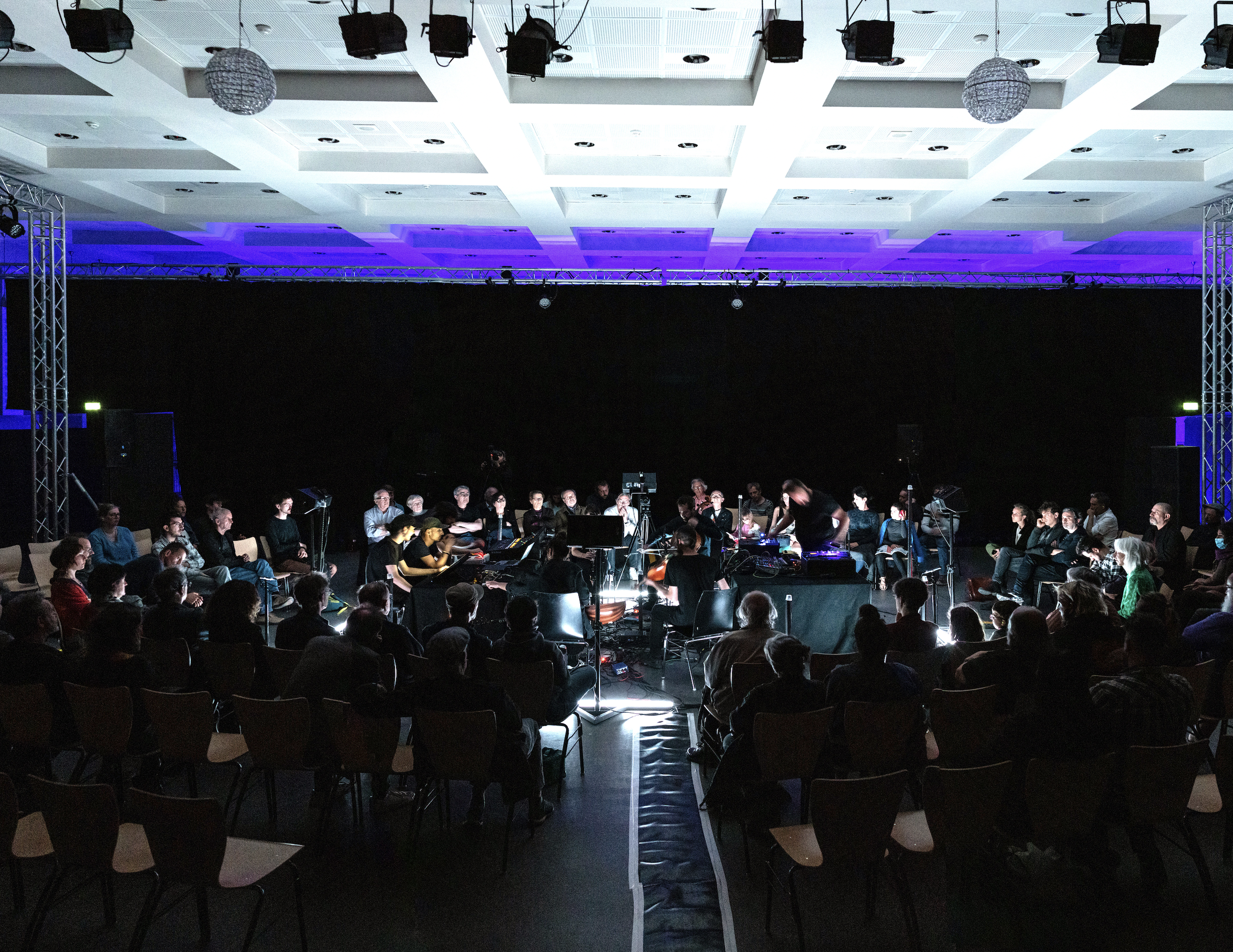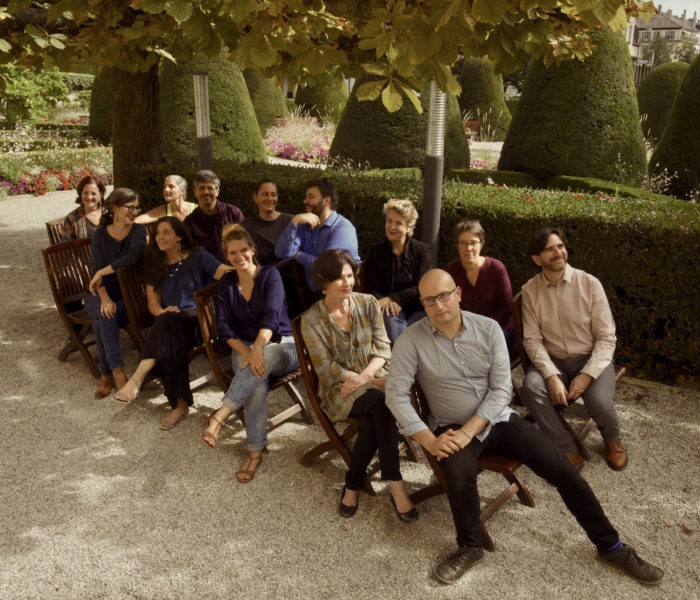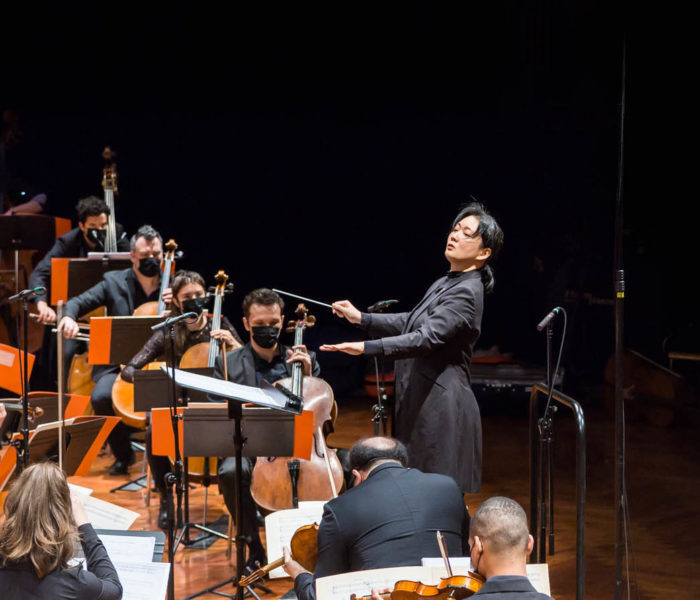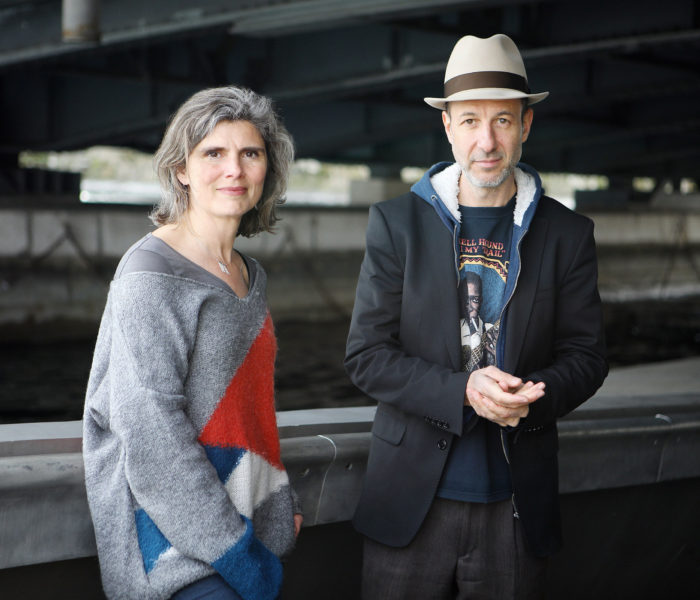Le festival Archipel de Genève accueille son public durant dix jours de musique non-stop, de midi à minuit, dans un lieu unique, la Maison communale de Plainpalais, un espace démultiplié pour offrir autant d’expériences d’écoute et d’instants de convivialité.
C’est en fédérant leur réflexion et leurs compétences respectives, le domaine de la musique écrite pour Denis Schuler, l’univers des installations, de la performance et de l’électroacoustique pour Marie Jeanson, que les deux directeur.rice.s ont concocté leur deuxième édition (avec le public) : « Plutôt que de penser à partir d’une thématique, nous fonctionnons par associations et recoupements d’idées d’où finissent par se dégager les lignes de force de la programmation », nous expliquent-ils. Dans cette édition 2023, mêlant avec fluidité installations, performances, « conversations acousmatiques » et concerts instrumentaux, une attention toute singulière est portée sur les (petits) objets (Living Objects) et leur force d’attraction. Inversement, on note une tendance à la démesure avec les trente caisses claires de Mio Chareteau mais aussi les 80 musiciens du Basel Sinfonietta et les quatre heures de Corals, une station service, la performance installative et performative de Léo Collin et son Kollektiv International totem qui ouvre la manifestation.
Comme chaque année, le festival Archipel est en lien avec les étudiants de composition de la HEM de Genève dont on pourra entendre les œuvres au Salon d’écoute où est installé l’acousmonium (orchestre de haut-parleurs). Archipel est aussi le lieu des enfants avec une salle de jeux et des concerts participatifs invitant les jeunes musiciens du Conservatoire populaire de Genève, le tout emmené avec beaucoup d’énergie et de charisme par Kaisa Pousset.
Quatre installations tournent en continue durant tout le festival : celle de la peintre japonaise Tami Ichino frappe les regards dès l’entrée du bâtiment. De superbes tambours de toiles écrue de toutes les tailles descendent du plafond. De longues baguettes de différentes qualités sont à la disposition du public pour les mettre en résonance. À l’étage, on est convié à s’allonger sur l’estrade de bois, construite à cet effet par l’artiste plasticien zürichois Dimitri de Perrot à qui le festival à passer commande : « s’allonger à même le sol et prendre le temps d’écouter ce qui se passe à la hauteur de nos pieds, car le sol parle », nous dit de Perrot… Pas de coussins, qui modifieraient les conditions de cette expérience immersive! Les images sonores en 3D sont bluffantes, qui sollicitent activement la perception et l’imagination. Dans la cursive donnant accès à la Grande salle où Vincent de Roguin a son étal de libraire (particulièrement riche!), The Handphone Table (1978) de l’Américaine Laurie Anderson est une invitation à se mettre à table, les deux coudes posés à des points stratégiques et les mains sur les oreilles pour capter les vibrations du son qui se transmettent par les os. L’orchestre de papier (2022) est une musique machinique de 14 pièces du Français Pierre Bastien, l’une des dernières inventions de ce musicien/constructeur d’instruments de musique aussi fragiles que tapageurs. Des tambours de papier sont mis en vibration sous l’effet de ventilateur, rejoints par six orgues de papier et autant de flûtes qui sonnent à tout de rôle avant de faire chœur dans le tutti final.

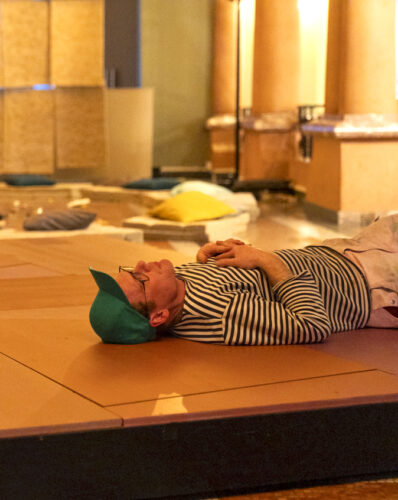
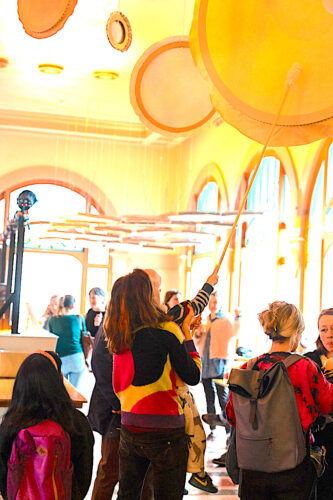
Les performances, lieu de l’expérience acoustique
Fruit de l’imagination des concepteurs et d’un artisanat méticuleux, les objets mus par diverses sources d’énergie s’animent sous les doigts, pieds et gestes des performeurs dans cet après-midi du samedi 1er avril où s’enchaînent à un rythme effréné, cinq propositions investissant autant d’espaces appropriés.
Celle de l’artiste genevoise Mio Chareteau, dans la Grande salle, réunit trente caisses claires (fût métallique et peau blanche) et autant d’élèves du Conservatoire populaire auxquels se joignent les solistes d’Eklekto (collectif de percussions contemporaines) et amateur.s.ices volontaires.
Il s’agit, pour les enfants et les adultes, emmenés par une pulsation implacable, de faire sonner les peaux avec un gros feutre noir qui imprime sa trace à chaque impact sur l’instrument. Une résonance emplit alors tout l’espace, gros son dans le médium-grave entretenu durant une petite demi-heure tandis que se créent sur la peau autant de dessins à l’initiative de chacun, apportant sa contribution personnelle à l’œuvre collective finale : la « toile » est magnifique autant qu’éphémère, qui restera néanmoins visible dans l’état jusqu’à la fin de la journée.
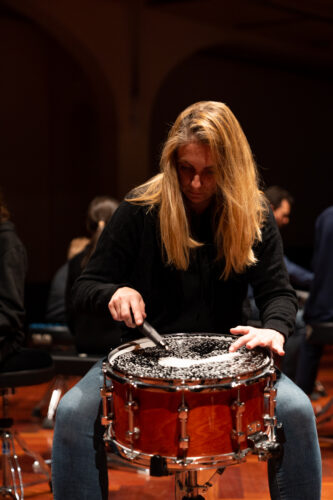
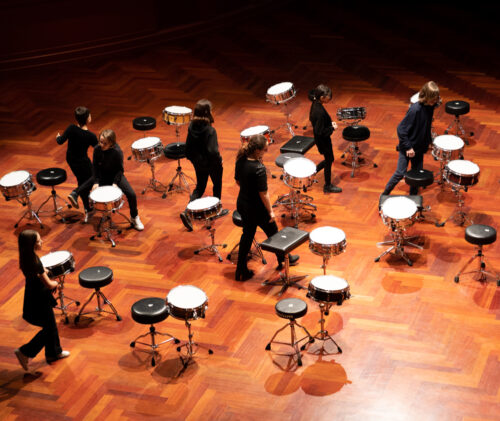
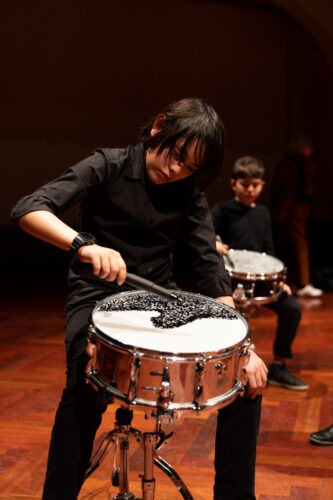
Field drum de Mia Chareteau avec l’ensemble Eklekto et les élèves du Conservatoire Populaire
Pour Dead Plants, la performance de Pierre Berthet et Rie Nakajima, les artistes sonores ont comme structure d’appui l’escalier de la Maison communale : « Écouter les sons des choses, c’est se rapprocher de leur âme, nous disent ces deux rêveurs d’inouïs qui multiplient les manipulations sur les objets pour les donner à entendre.
On est davantage séduit par la fourmilière poétique et délicate de Maria Komarova, objets trouvés mus par l’électricité dont elle modifie sans cesse la trajectoire pour diversifier le paysage sonore : bruissements, craquements, grincements doux… L’ingénierie fascine l’œil autant que l’oreille. Si les fréquences a minima de Failed Experiments 06 de Ryoko Akama et Anne-F Jacques, mettant en interaction lumière et chaleur, nous laissent un rien perplexe, le duo de choc Lotus Eddé Khouri et Jean-Luc Guionnet (danseuse et saxophoniste) nous impressionne par l’économie des moyens déployés et l’osmose entre l’action instrumentale et celle de la danseuse qui évolue sur place, via la plasticité et l’expressivité des mouvements de son corps.
Les intermittences du son
Corals, une station service du Kollektiv International totem, créé à Zürich en 2022 fait l’événement de ce premier week-end genevois. Imaginé et écrit par le compositeur français Léo Collin, le spectacle pour instruments, électronique, acteurs, vidéo et smartphone est tout à fois installation, performance, théâtre et concert, incluant la dimension participative du public. Ainsi, pour ceux qui le souhaite, une application peut être téléchargée sur leur smartphone à l’entrée de la Grande salle, en vertu de laquelle ils recevront des invitations à venir sur scène et des indications précises sur l’action à y mener : prendre un café au distributeur qui émet des sons bizarres, acheter un paquet de cigarettes auprès de la vendeuse (qui s’est entourée d’un certain nombre d’objets sonores, sifflet, sonnette, flûtes à bec etc.) ou encore jouer avec une paire de cymbales en suivant le monitoring vidéo sur son smartphone… Dans le décor fictif (entièrement en carton) autant que coloré de cette station service, on dénombre quatre personnages : l’agent de sécurité, le technicien (aux manettes de l’électronique), la serveuse et l’agent d’entretien. Ils évoluent dans leur zone d’activité quotidienne, avec des gestes et des actes automatiques relevant de la stéréotypie : comme cet étiquetage sonore et nerveux des cartons qui arrivent en flux continu, assumé par la serveuse de manière systématique.
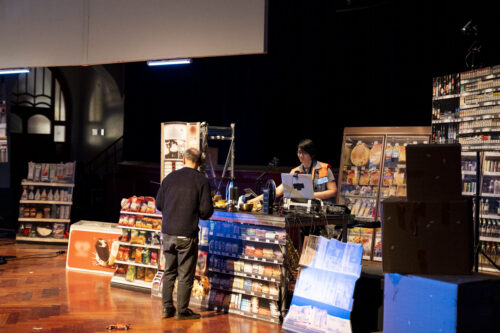

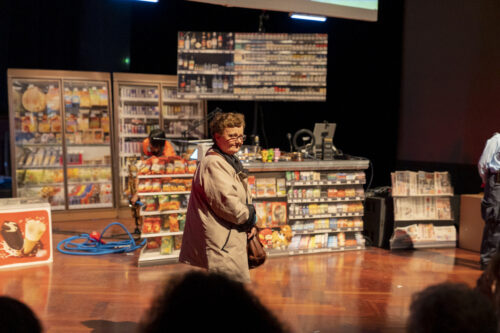
Mais chacun a son jardin secret, cette part de lui-même qui échappe à la monotonie existentielle et lui permet d’accéder à une sphère fantasmée qui passe aussi par les images de la vidéo. Ainsi ces instants privilégiés de la serveuse (Kay Zhang) lorsqu’elle peut tchatter avec sa communauté sur internet. Elle semble flotter sur un petit nuage avec cette voix chantonnée et délicieuse obtenue par le logiciel Auto-Tune : un fredon qui jalonne le parcours comme un refrain. L’agent de surface (incarné par le compositeur) cherche, quant à lui, et par tous les moyens, à transgresser le réel. Son aspirateur et ses ustensiles de nettoyage sont tous prétextes à déclencher des situations sonores intéressantes ; il a même des micros de contact aux articulations, lui permettant de jouer avec ses pas et ses gestes comme il joue avec ses voitures et son petit hélicoptère téléguidés, ramenant la poésie de l’enfance et du merveilleux. On assiste à de véritables coups d’accélérateur dans la dramaturgie générant des jets de fumée sortis du pot d’échappement de la voiture en carton, entre humour et dérision, poésie et second degré. Les instruments de musique s’invitent également avec l’apparition d’un cor, d’une flûte, du saxophone de la serveuse et du piano installé à l’extérieur de la salle. Il apparaît sur l’écran multicanal qui domine le décor via une captation vidéo live. Ce sont des pièces (compilations) de Léo Collin écrites bien avant le spectacle, dont le temps musical offre des décrochements bienvenus dans l’articulation générale. Très drôles sont ces deux moments de théâtre visibles sur l’écran, deux séances de visio conférence entre quatre participants lambda et un expert (acteur) dont le discours, adoptant les tics de la langue allemande (hm? ja genau, etc.) annule toute possibilité de réponse de la part des écoutants. La scène est inspirée au compositeur (qui en écrit le texte) par la création des syndicats d’Amazone. Il s’agit ici de fonder des syndicats de stations service pour apprendre à dire non! L’apparition des Neue Vocalsolisten de Stuttgart munis de casques VR (qui leur permettent de lire la partition en temps réel) sur la face de six petits cartons est le clou du spectacle. C’est d’ailleurs eux qui le terminent, interprétant à deux reprises les chansons de Léo Collin à qui l’on doit cette folle aventure, aussi risquée que bien articulée, métaphore d’une utopie possible dans un lieu sans avenir.

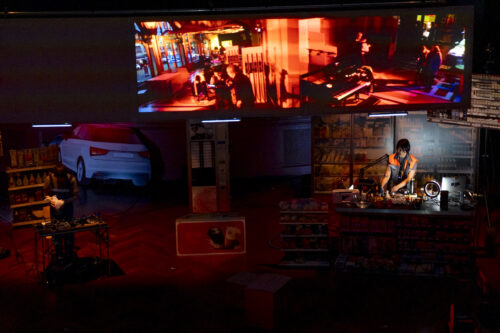

Mettre en scène la musique
L’équipe du festival compte deux scénographes, Yvonne Harder et Lukas Stucki qui ont contribué à améliorer l’acoustique souvent très réverbérante de la Maison communale en distribuant du sol au plafond des pièces de feutre gris souris dans les espaces les plus vulnérables. Ils ont à cœur également d’optimiser les conditions d’écoute. On est en position allongée, dans Le salon d’écoute, pour partager, à midi et avec Jérémy Chevalier, quelques uns de ses coups de cœur sonores. L’artiste basé à Genève, plasticien, performer et inventeur tous azimuts, est en résidence durant tout le festival.
Essentiel également, pour les deux scénographes, est de diversifier les lieux en fonction des exigences acoustiques et de les préparer visuellement : plus réverbérant (la Grande salle) pour les instruments, plus sec (la salle de jeux) pour la musique amplifiée, tout près de la librairie pour les performances avec texte, etc. Ainsi la journée des duos du dimanche après-midi est-elle distribuée dans tous les espaces de la Maison communale, modifiant le dispositif et l’angle d’écoute pour chacune des formations.
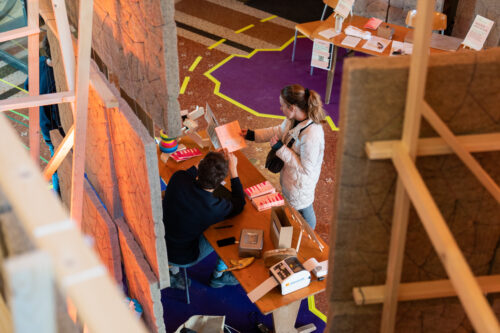

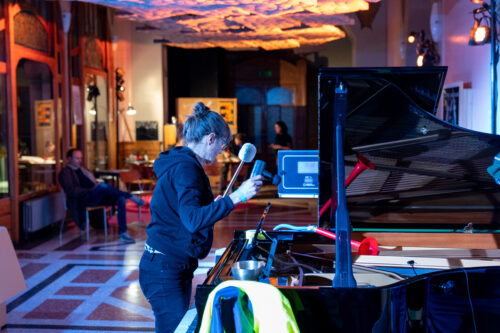
Les douze duos (celui des deux harpistes sera malheureusement annulé) embrassent géographiquement une grande partie des cantons de l’Helvétie et musicalement bon nombre de genres musicaux (écrit, improvisé, électroacoustique, live électronique, mixte, etc.) et autant de formations duelles. En témoignent les trois premiers duos que nous avons pu entendre.
Dans le salon d’écoute, au cœur de l’acousmonium, le duo voix (Aurélie Emery également aux manettes) et contrebasse (Dragos Tara), incluant une importante partie électroacoustique, est une commande du festival. Il repose sur un travail subtil de fondu enchaîné entre le field recording (sons naturels enregistrés) et le jeu des deux protagonistes. La contrebasse puis la voix chantée sont traitées en direct avant un nouveau glissement de l’instrumental aux sons de la nature.
D’une grande finesse de réalisation, la performance de Martina Berther à la basse électrique et de Simone Lappert, comédienne, nous enchante d’autant. Entendue sur des poèmes en allemand, la voix est belle, clairement articulée, dans un rythme ménageant de longs silences habités. La basse électrique y ajoute son grain, ses accélérations et ses couleurs, toujours discrète néanmoins, sensible aux mots et au débit de notre diseuse.
Slovène, l’accordéoniste Nejc Grm termine sa formation à Bâle et à Fribourg. Il est en duo avec la Bâloise Bettina Berger dans une pièce à bas voltage, évoluant dall’niente al niente : musique de la fragilité et de l’instabilité où les deux instrumentistes se complètent et échangent leur rôle, des fréquences aiguës de leur instrument (son éolien de la flûte basse) au grain sombre de leur registre grave : le son et la qualité de l’écoute sont optimales.
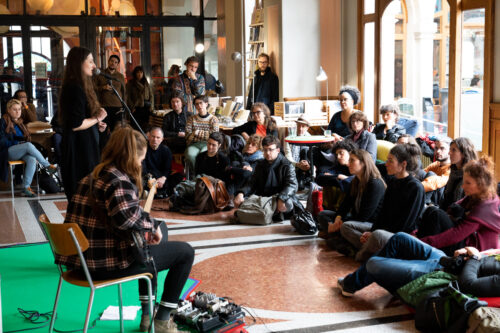
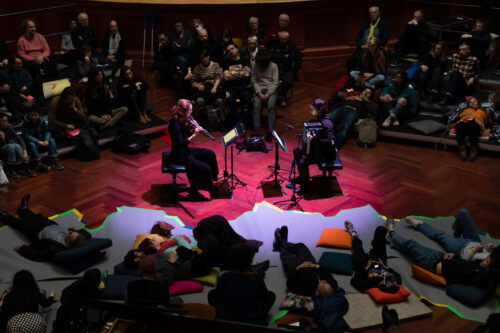
Croiser les genres et les esthétiques, les générations et les pratiques, accueillir le bizarre, l’étrange et le pas de côté sans rogner sur la qualité et la force des propositions… c’est l’ADN du festival Archipel de Genève et c’est jusqu’au 9 avril, de midi à minuit.
Reportage de Michèle Tosi
Festival Archipel, Genève, Maison communale de Plainpalais du 31 au 2-04 :
31-03 : Léo Collin (né en 1990) : Corals, une station service ; Kollektiv International totem.
1-04 : Partage d’écoute avec Jérémie Chevalier ; Performances de Mio Chareteau, Maria Komarova, Pierre Berthet et Rie Nakajima ; Ryoko Akama et Anne-F Jacques, Lotus Eddé Khouri et Jean-Luc Guionnet.
2-04 : Trois duos : Aurélie Emery et Dragos Tara, voix, contrebasse et électroacoustique ; Martina Berther et Simone Lappert, basse électrique et voix ; Bettina Berger et Nejc Grm, flûte basse et accordéon.
Photos © Arthur Miserez
Photos © Elena Petit Pierre
Photos © Amadeus Kapp



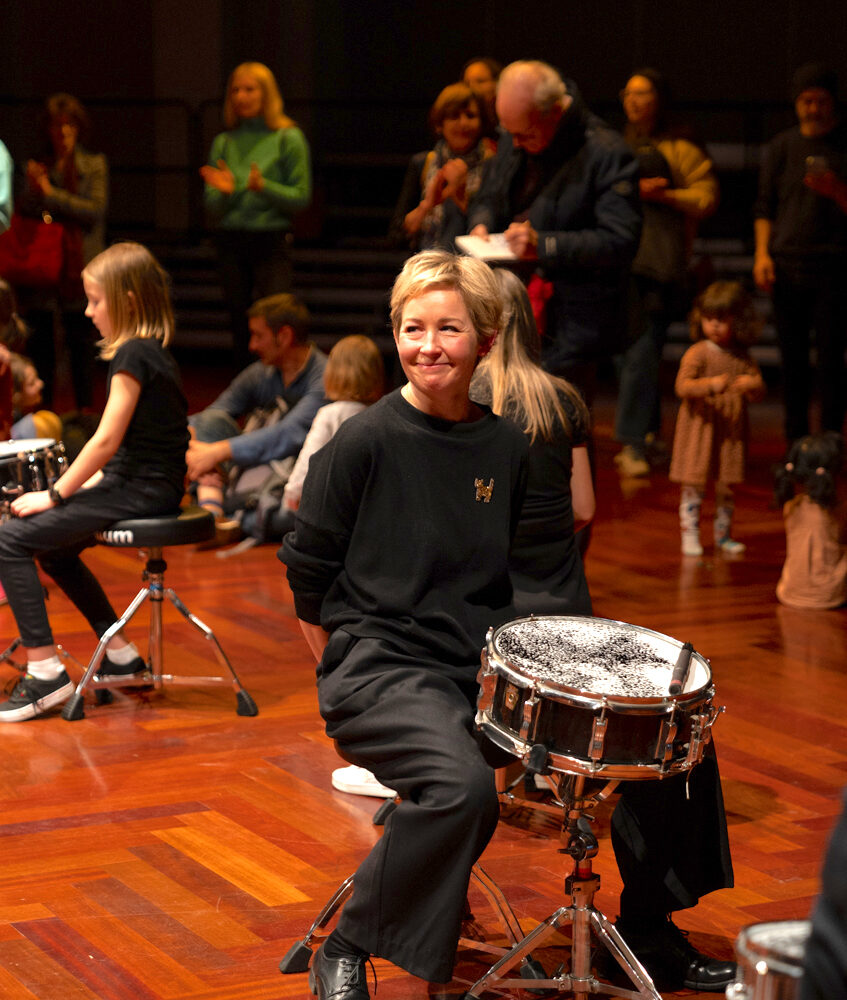)
